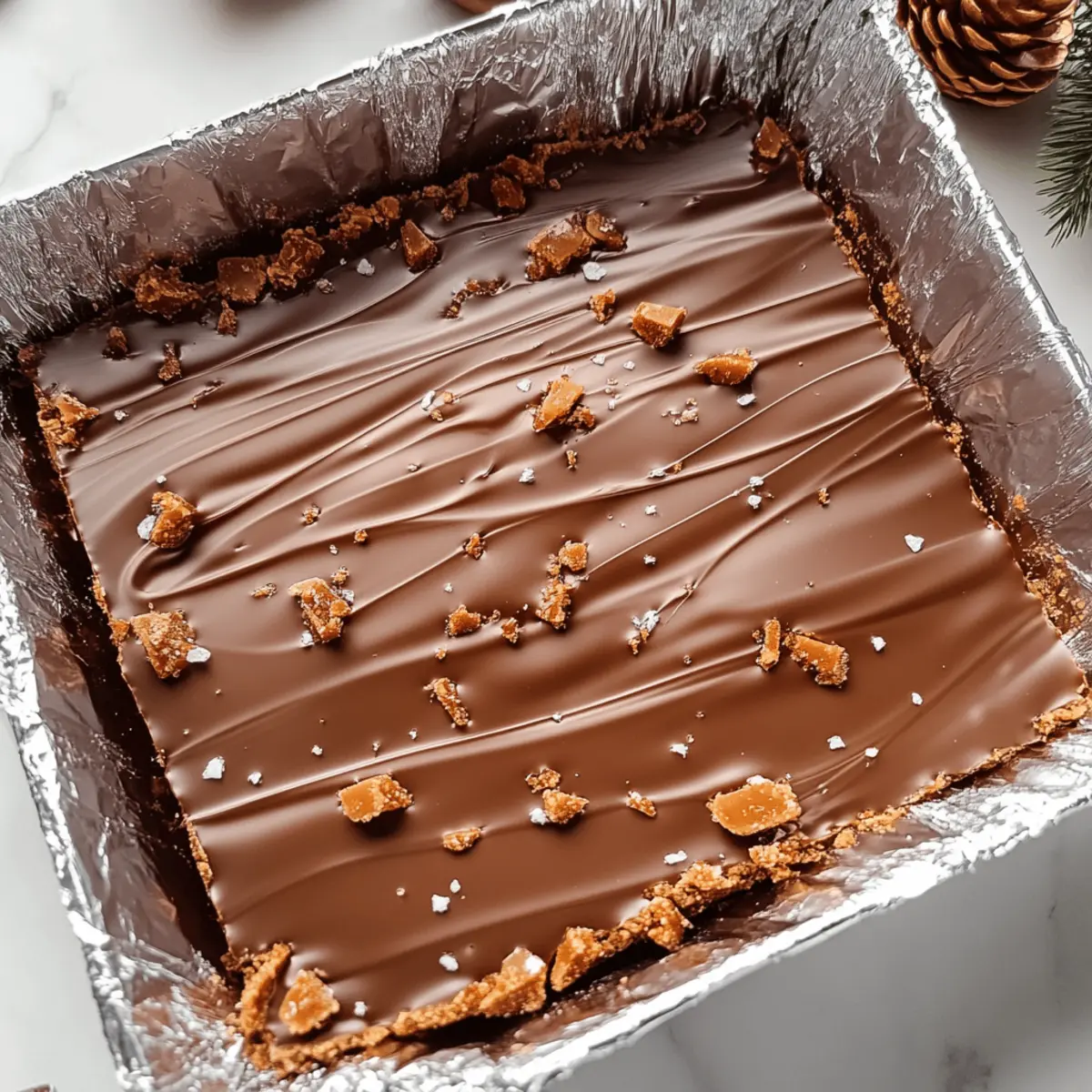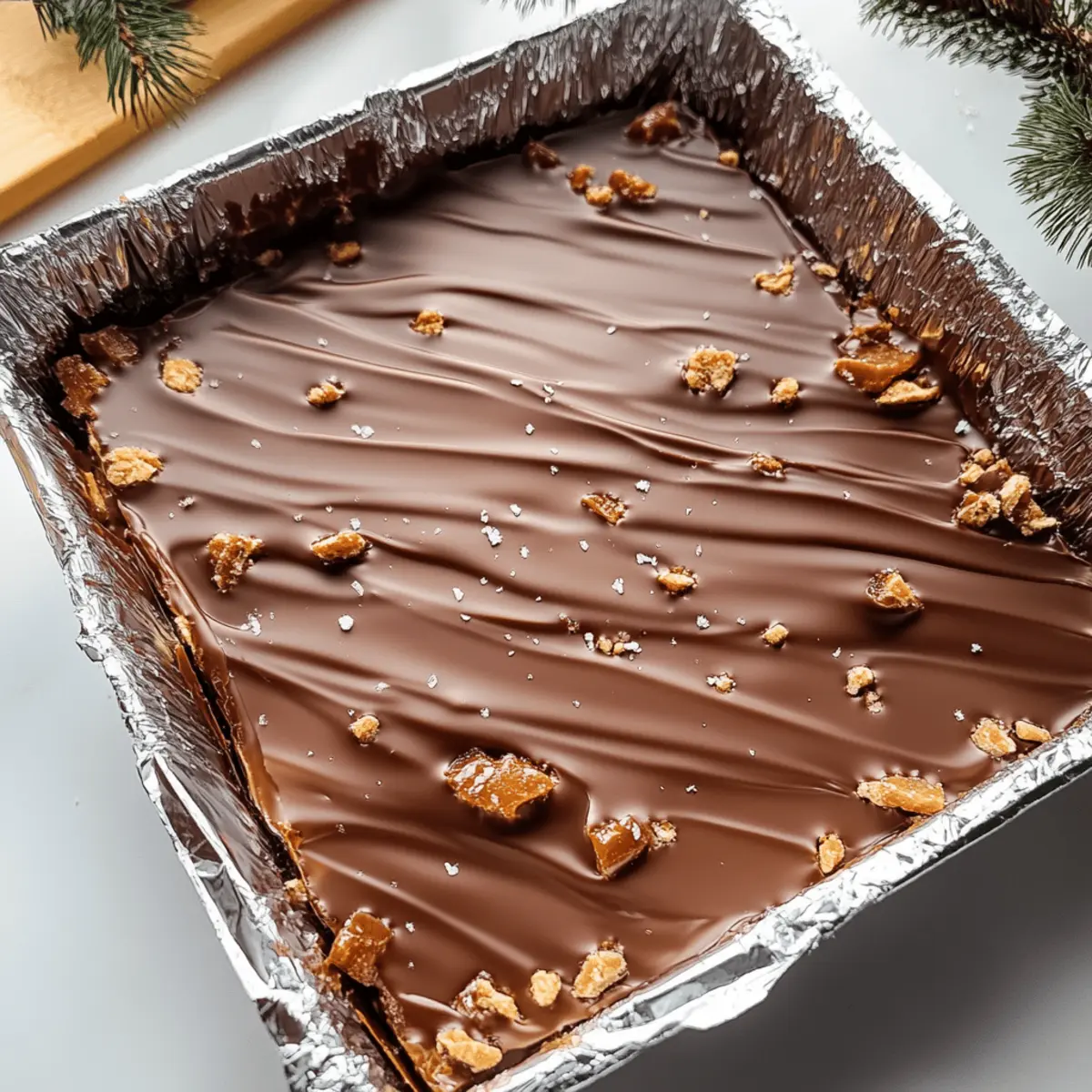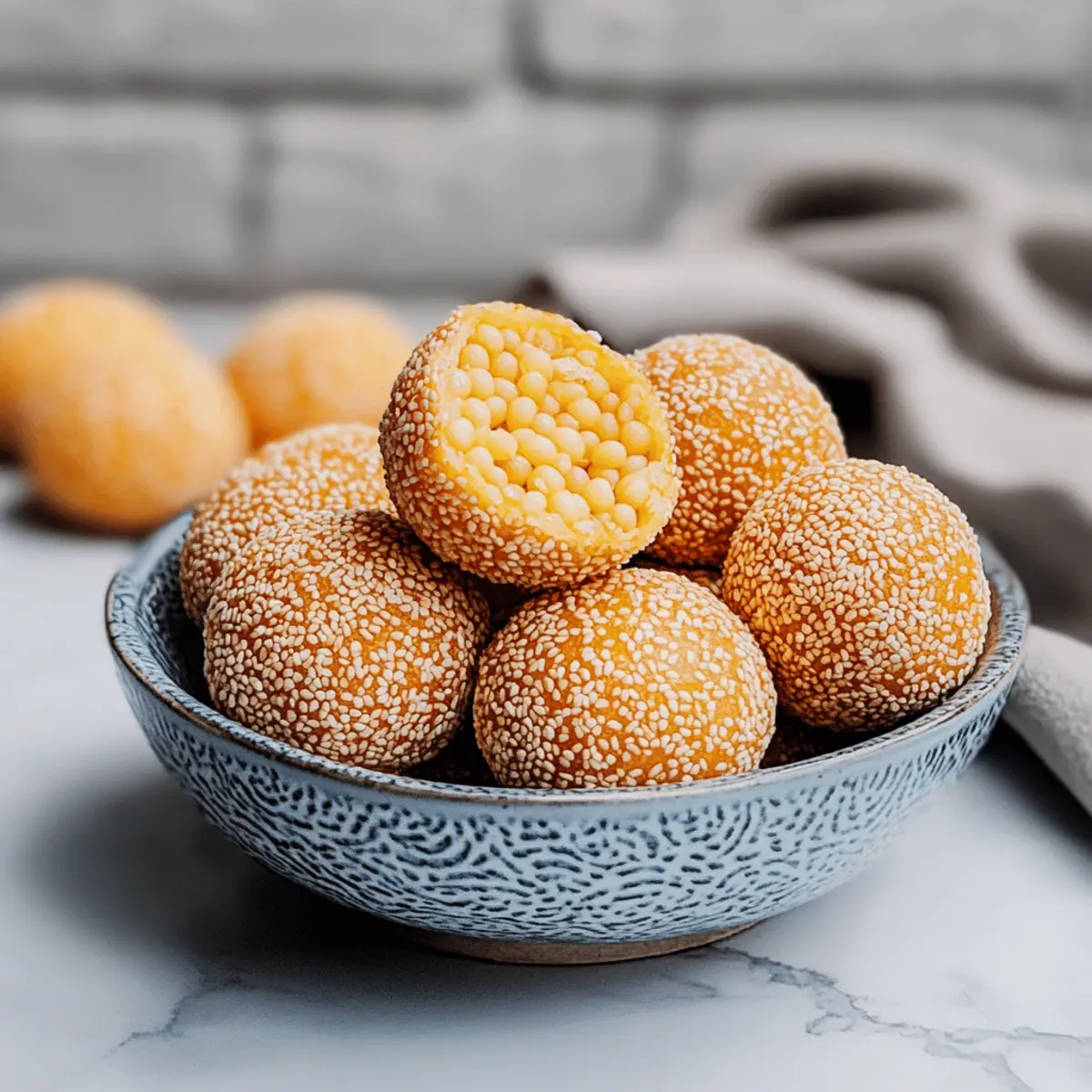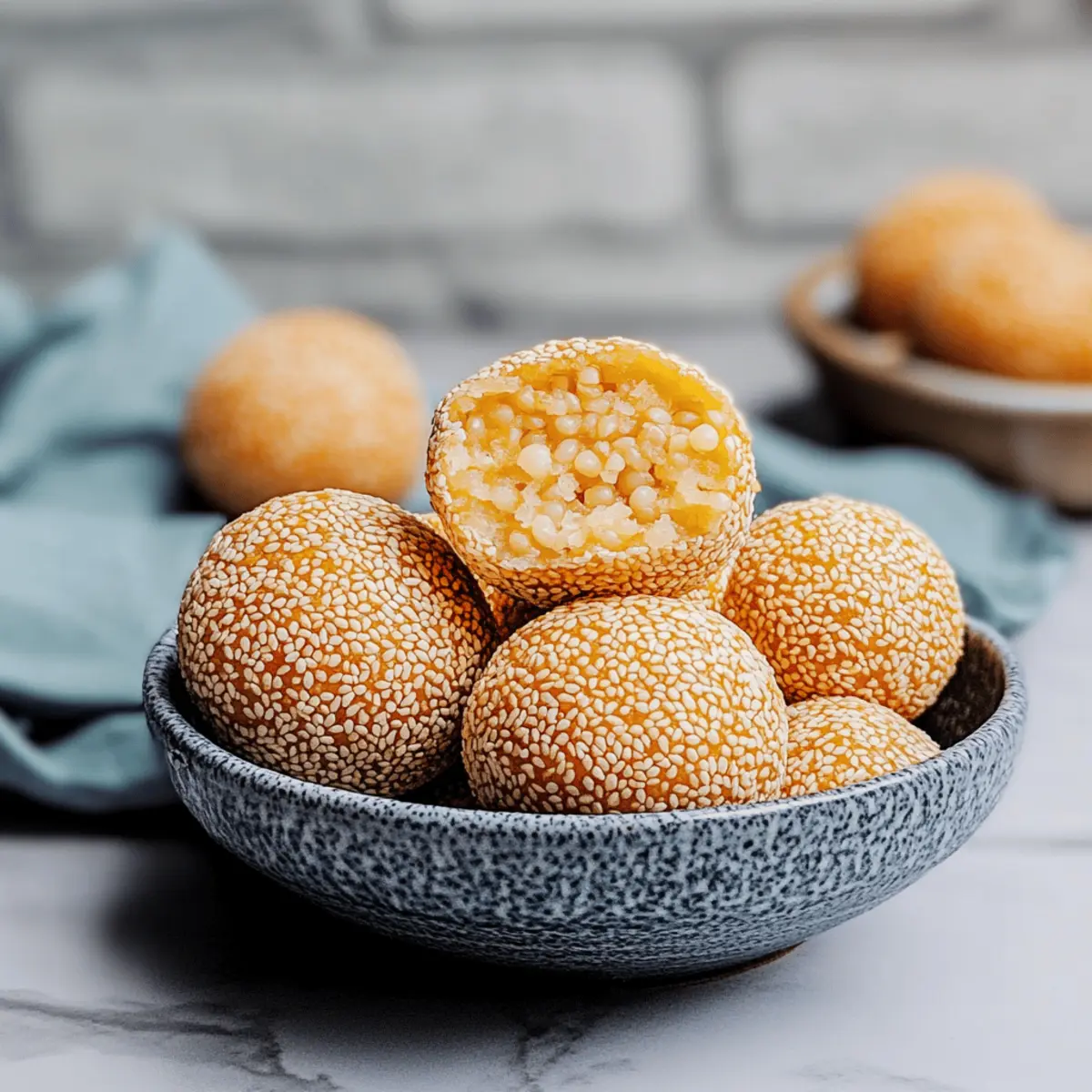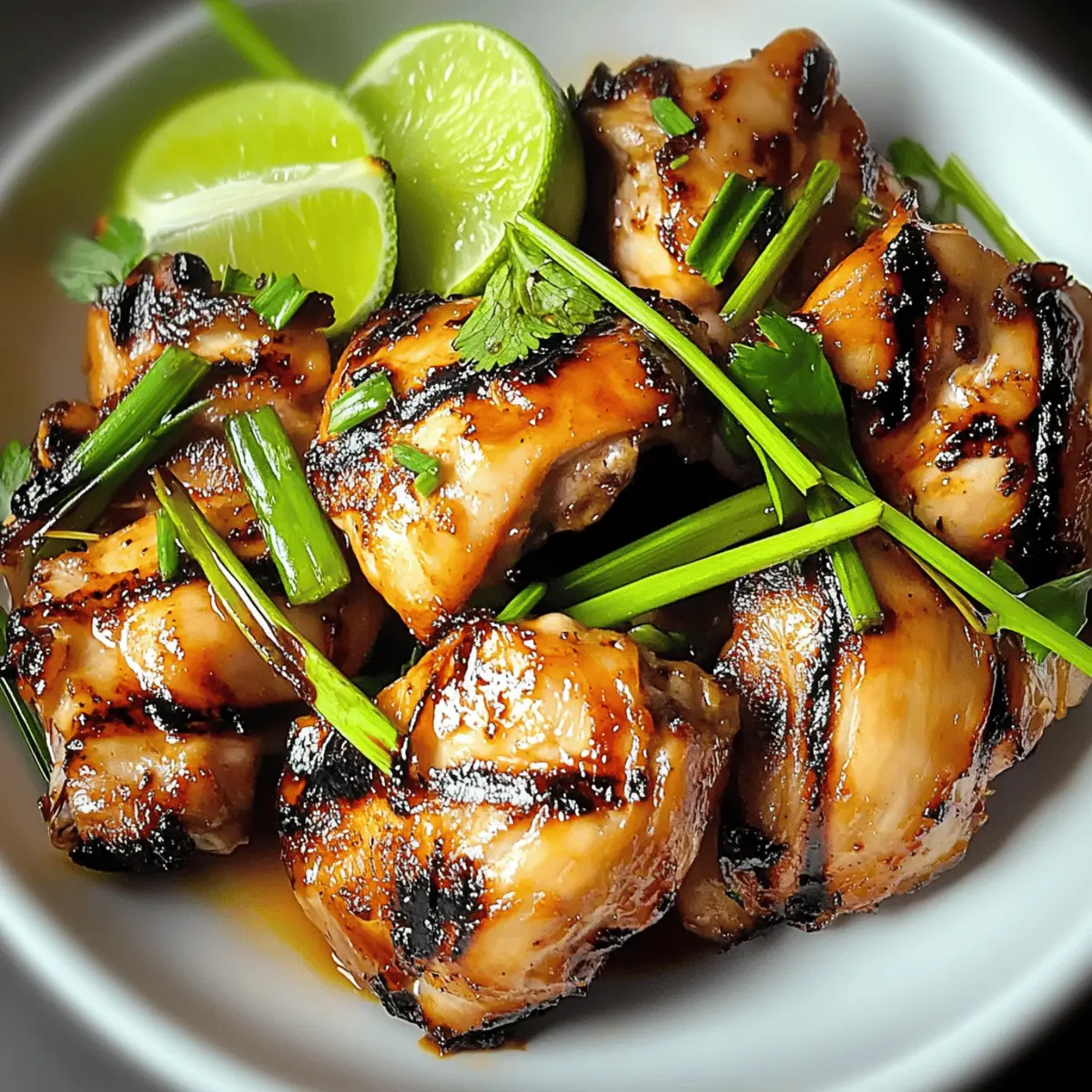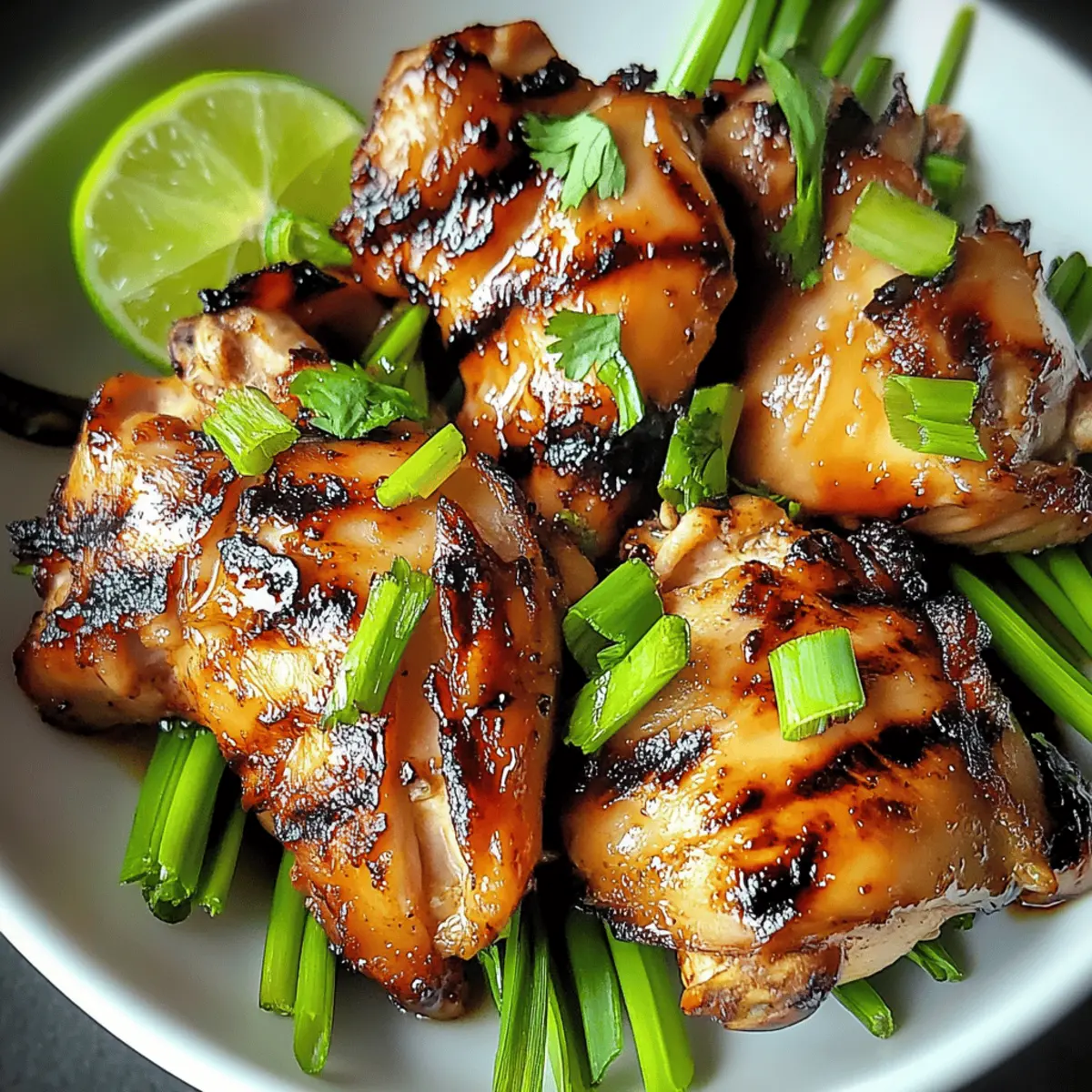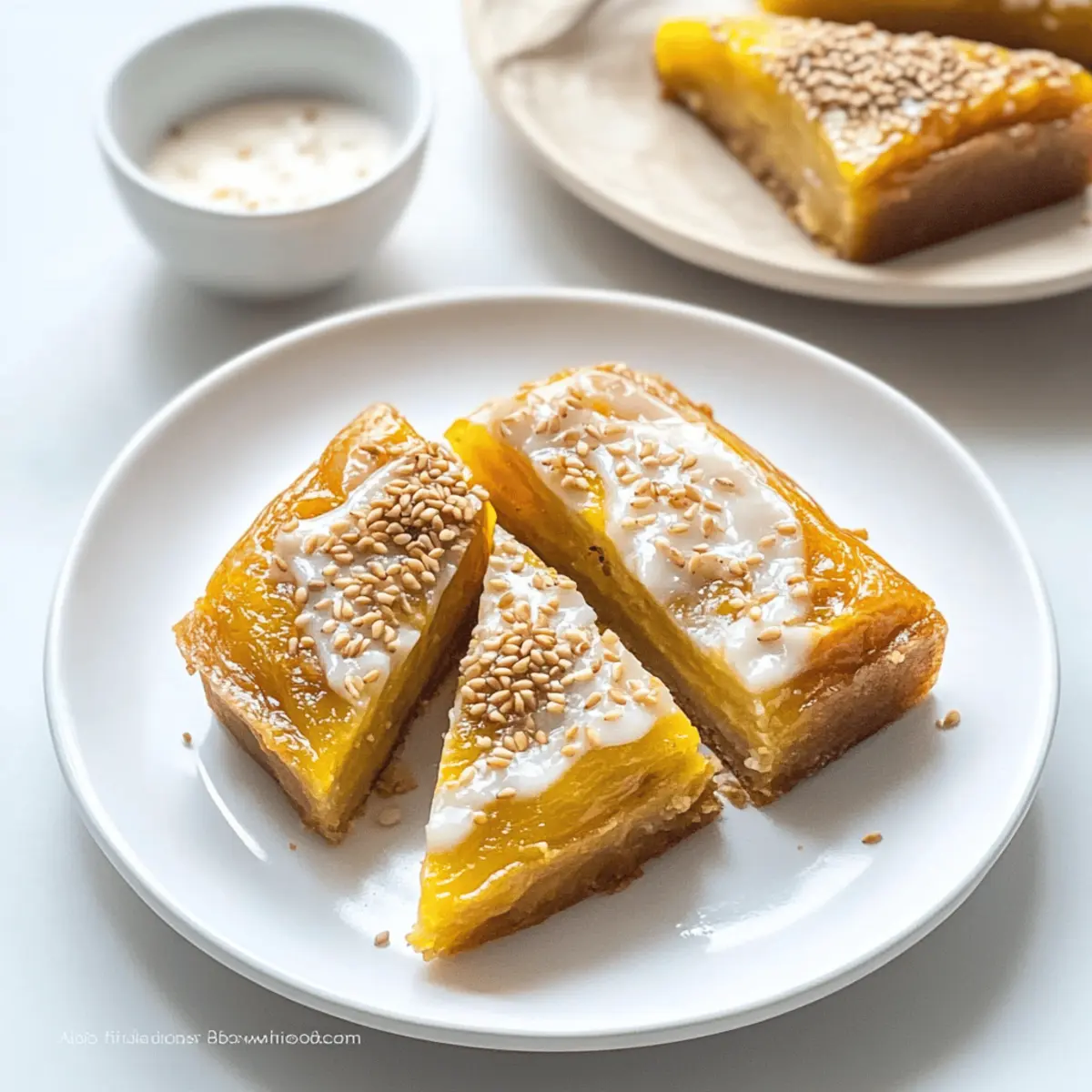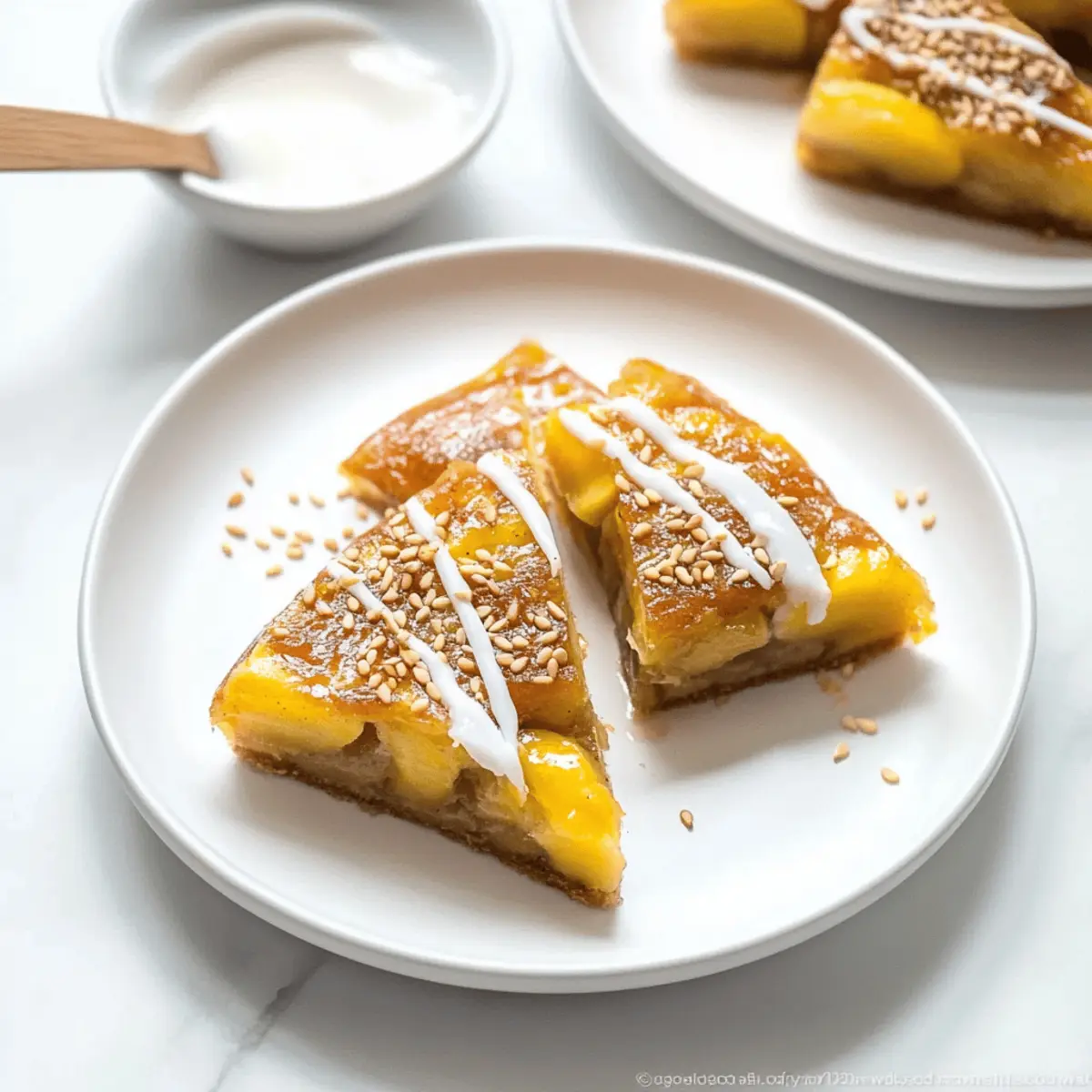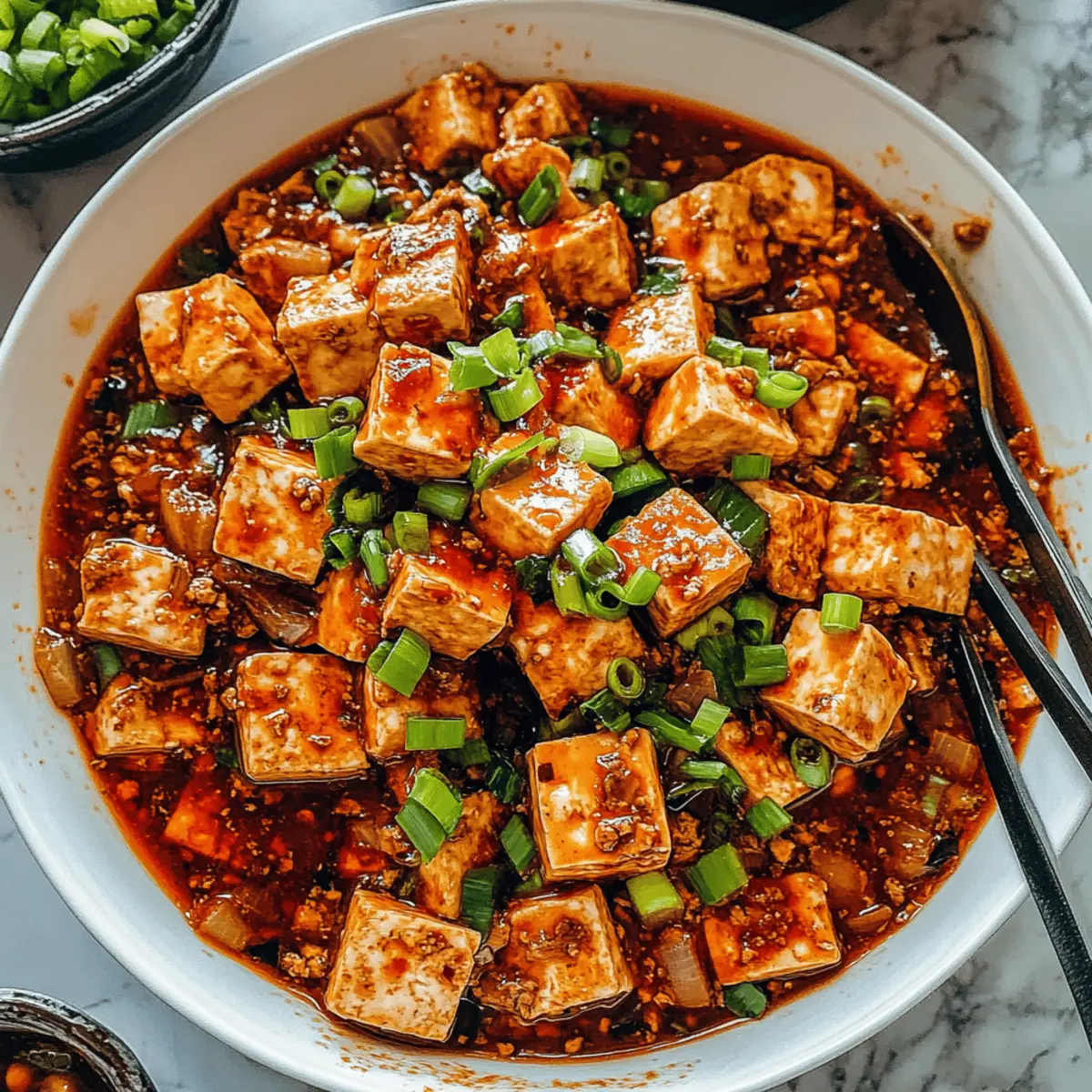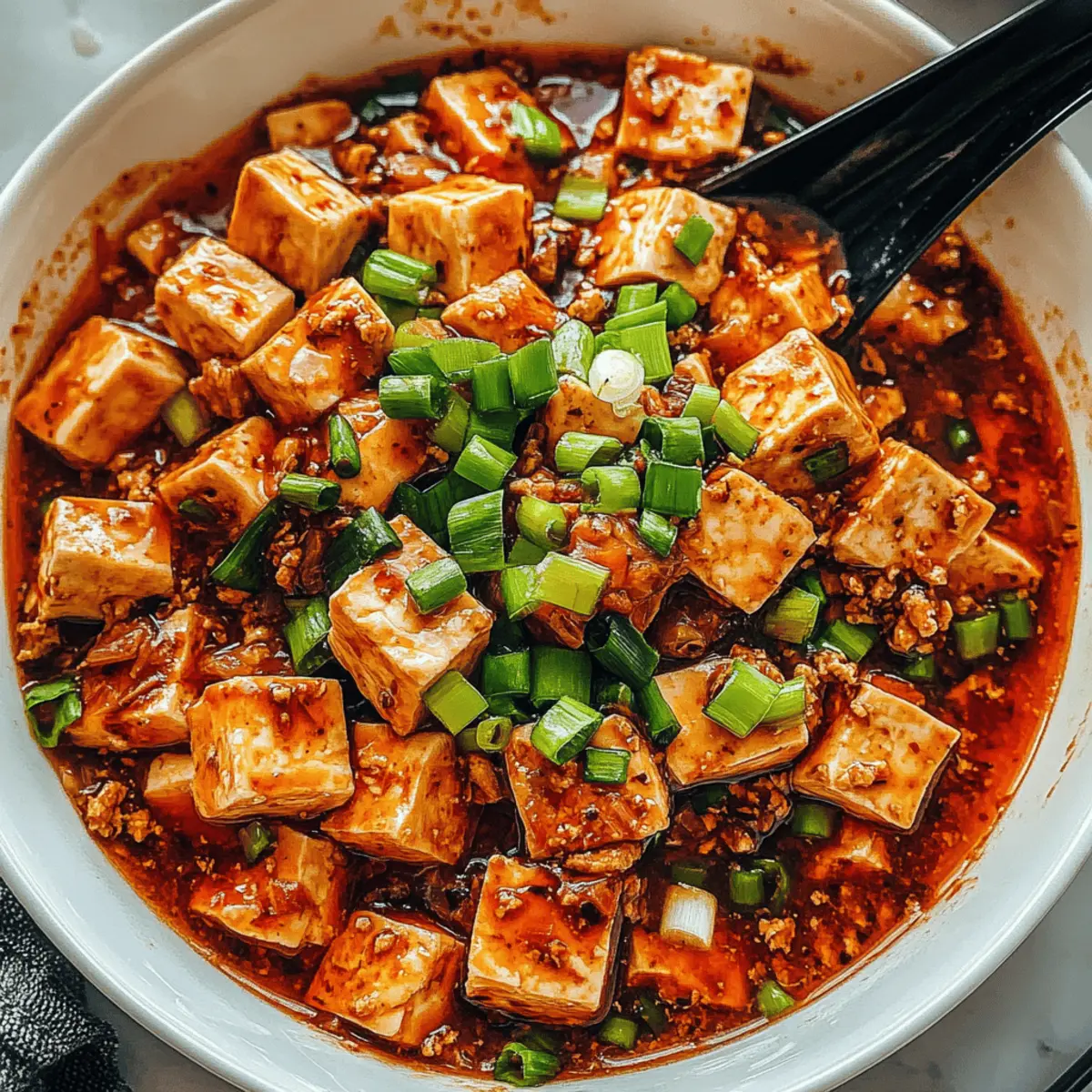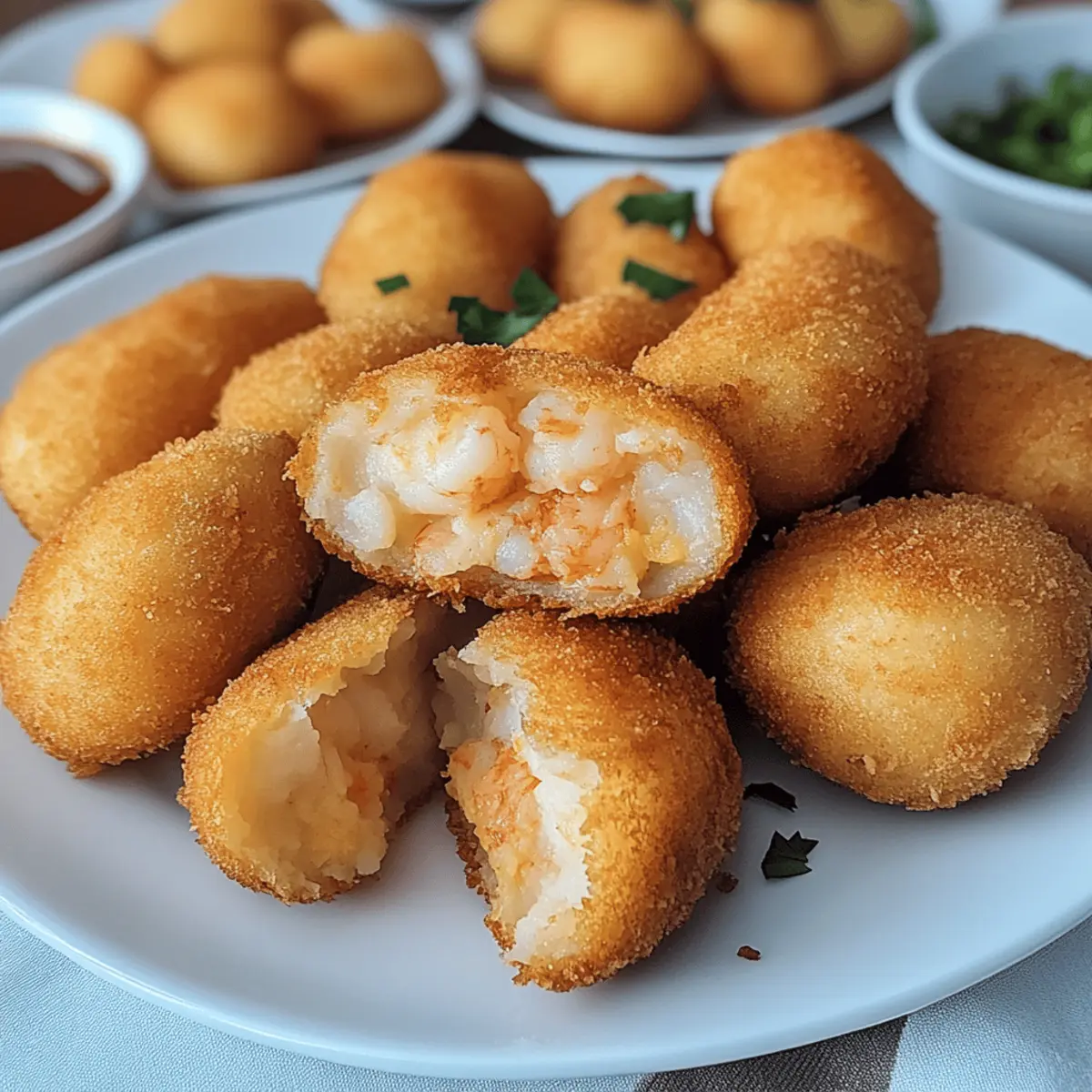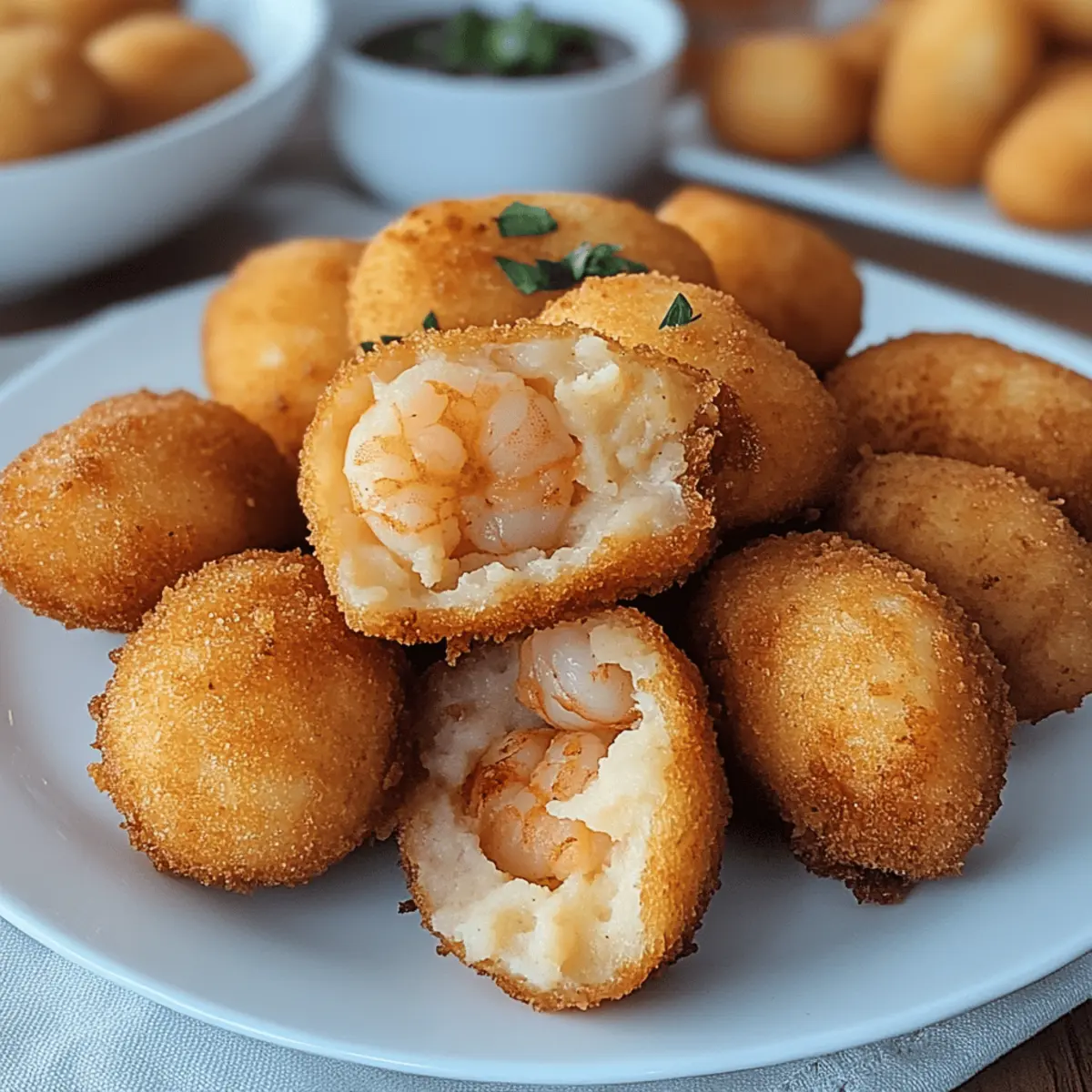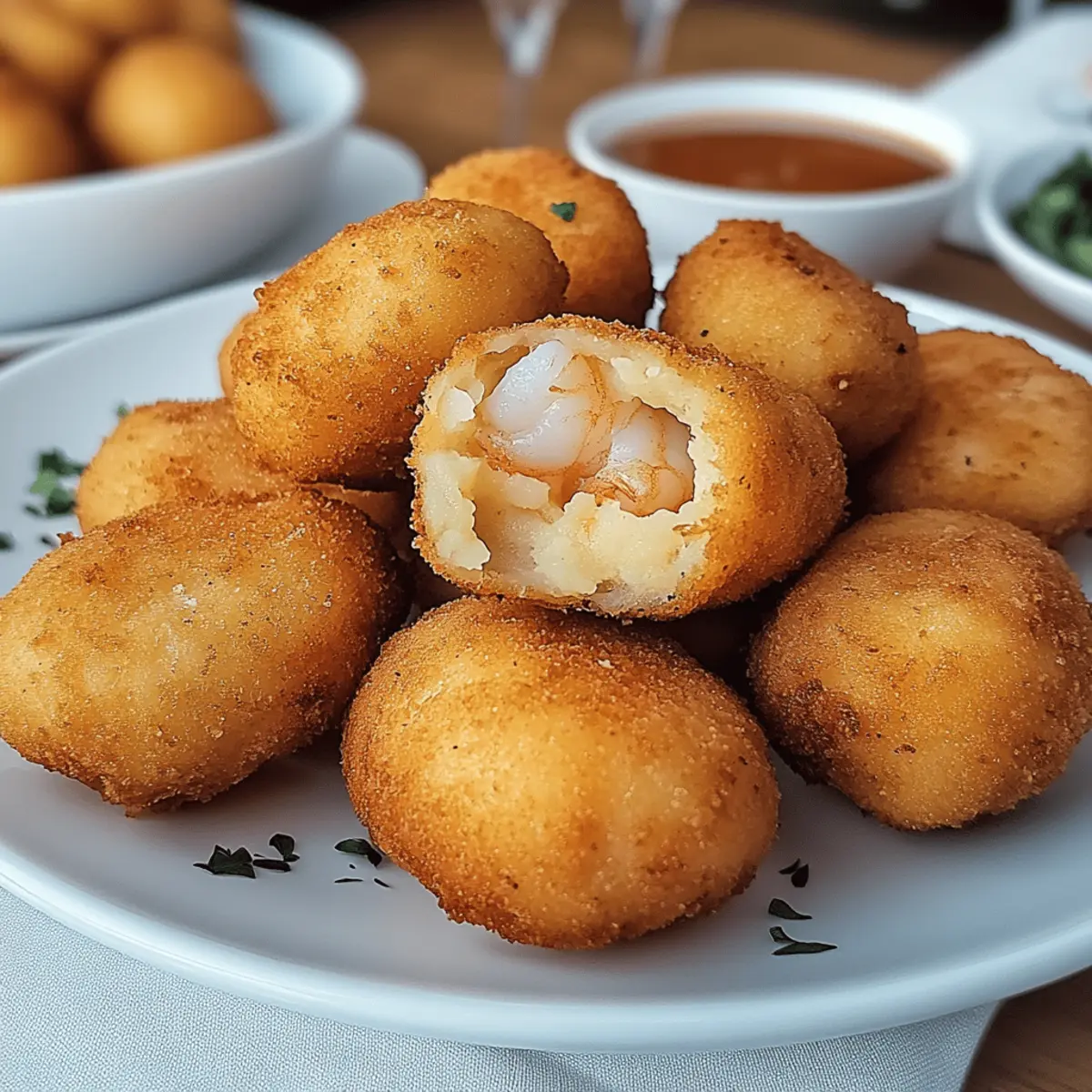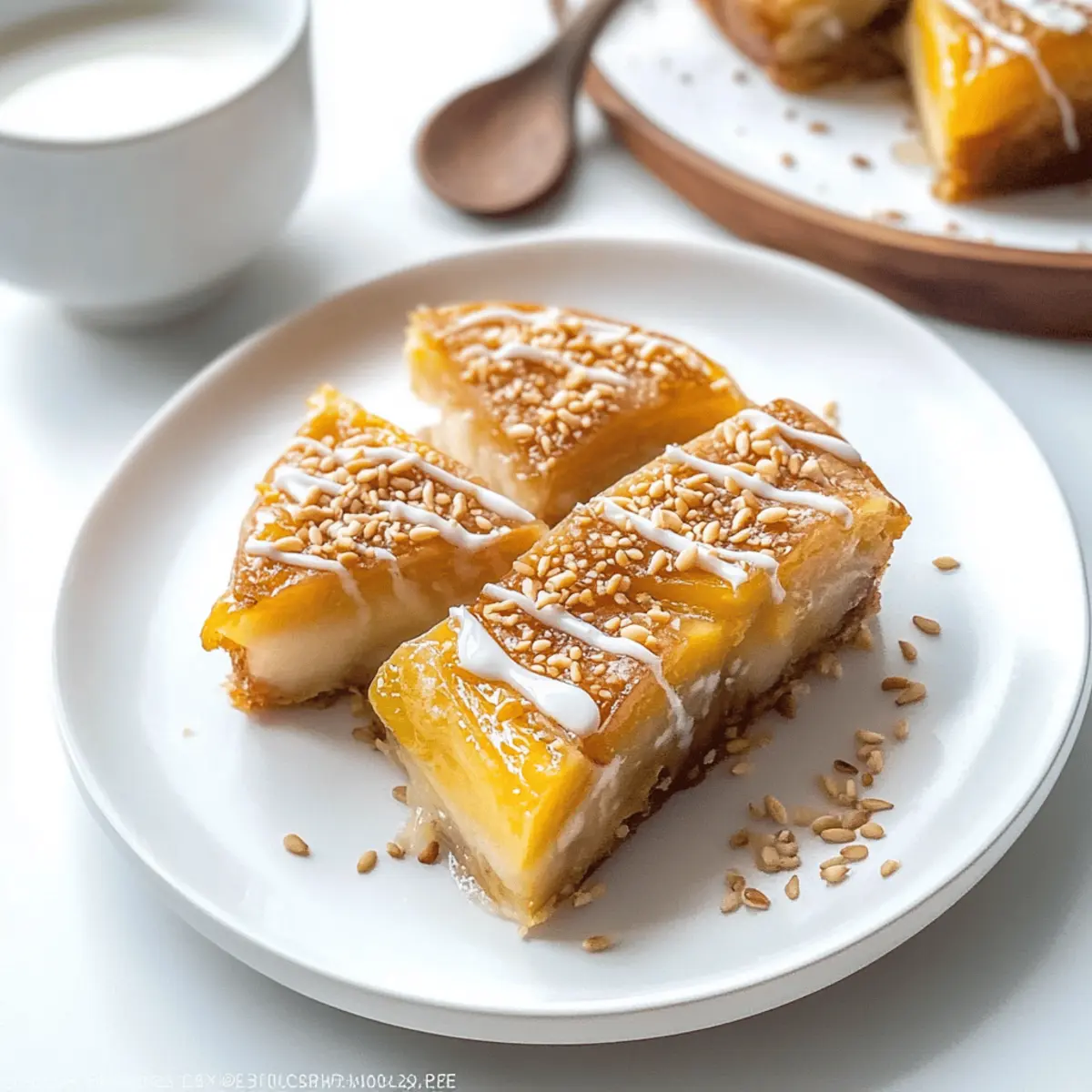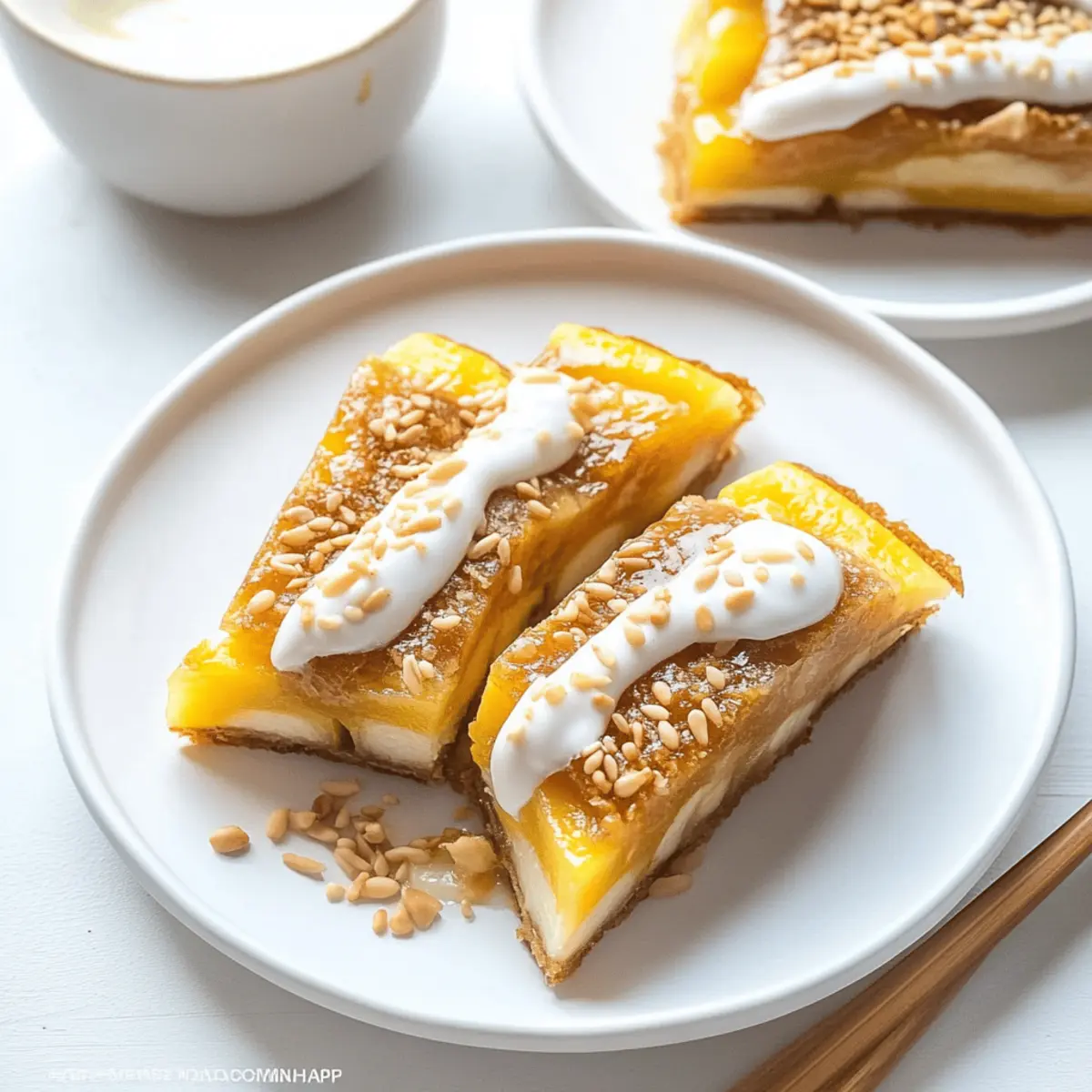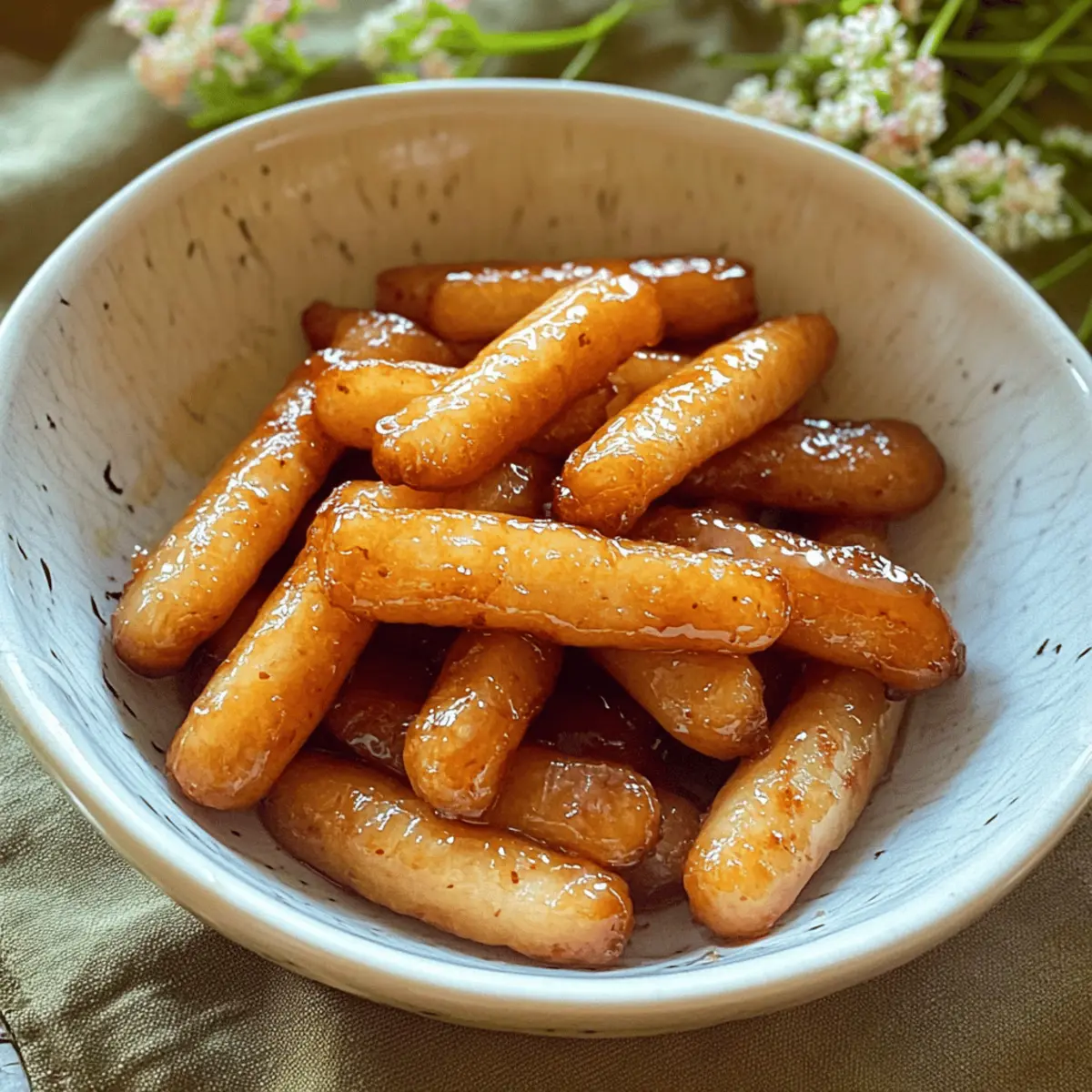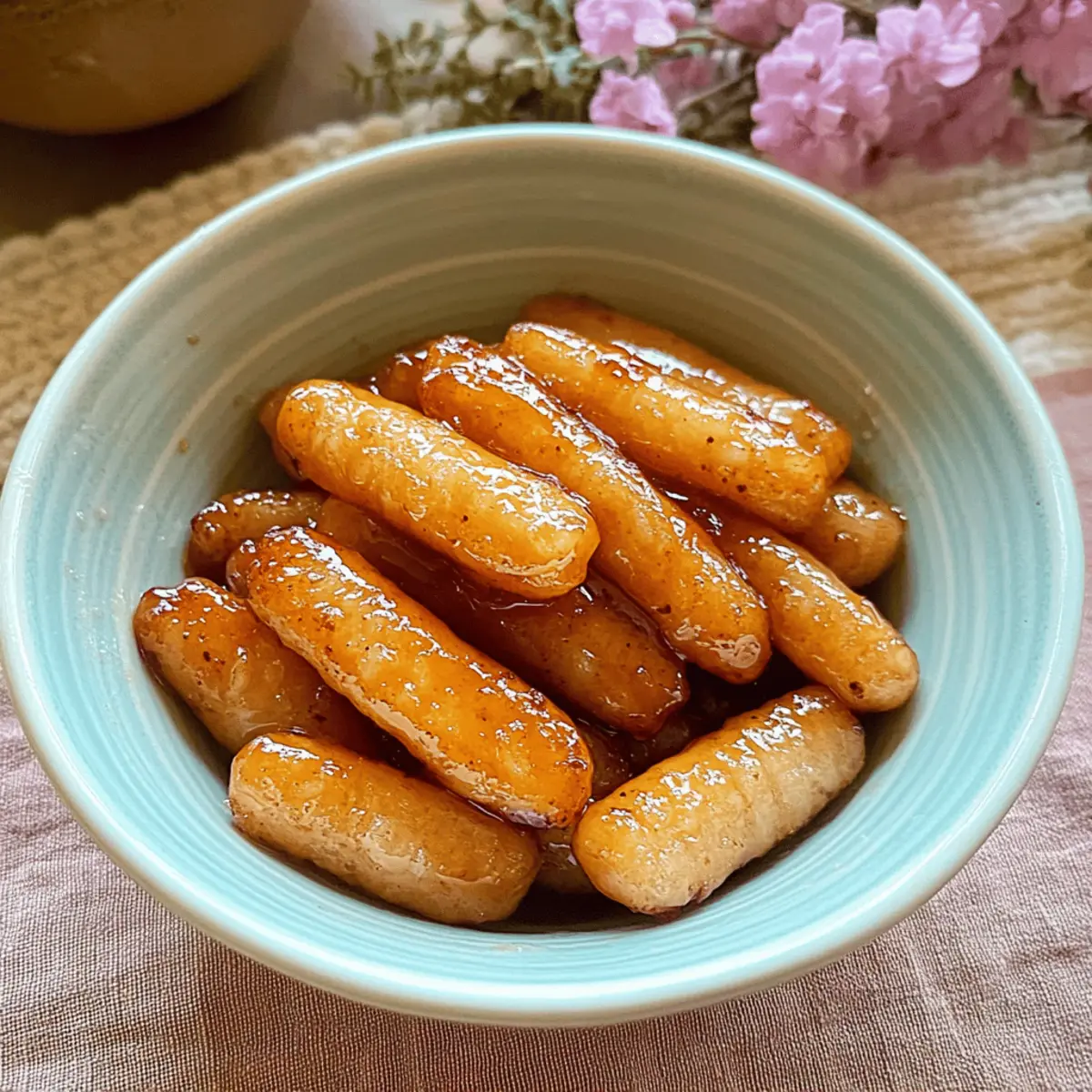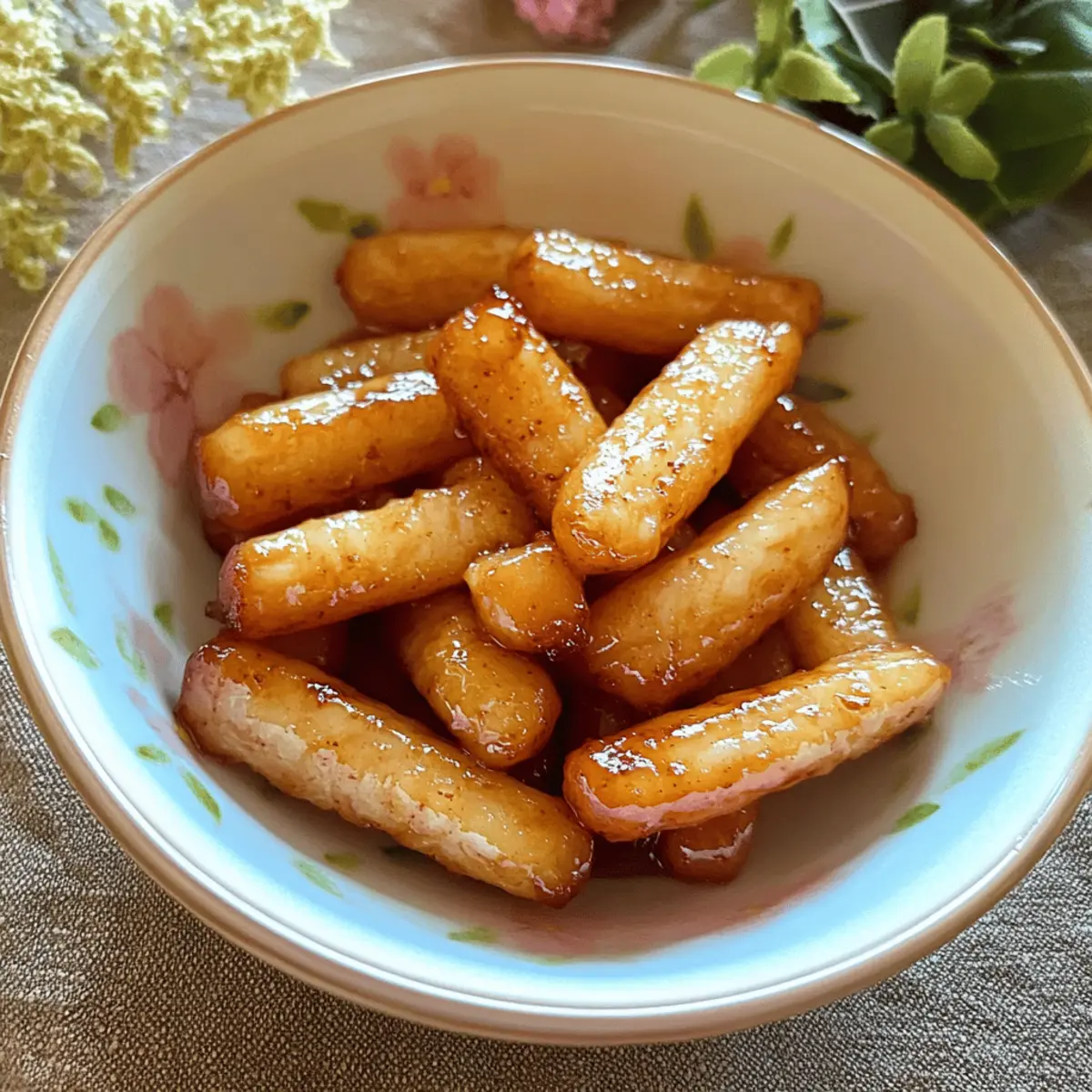The aroma of melting sugar and butter wafting through the kitchen is enough to transport me right back to holiday gatherings with family and friends. As we celebrate the season, there’s nothing quite like making a batch of Classic Christmas Toffee—a crunchy, buttery treat that’s perfect for sharing or enjoying with a cozy cup of hot cocoa. This recipe not only caters to various dietary needs, featuring nut-free and dairy-free options, but it also offers a satisfying alternative to store-bought sweets. Plus, it’s simple to prepare and makes an impressive homemade gift, sure to spread holiday cheer. Are you ready to dive into the delightful world of toffee?
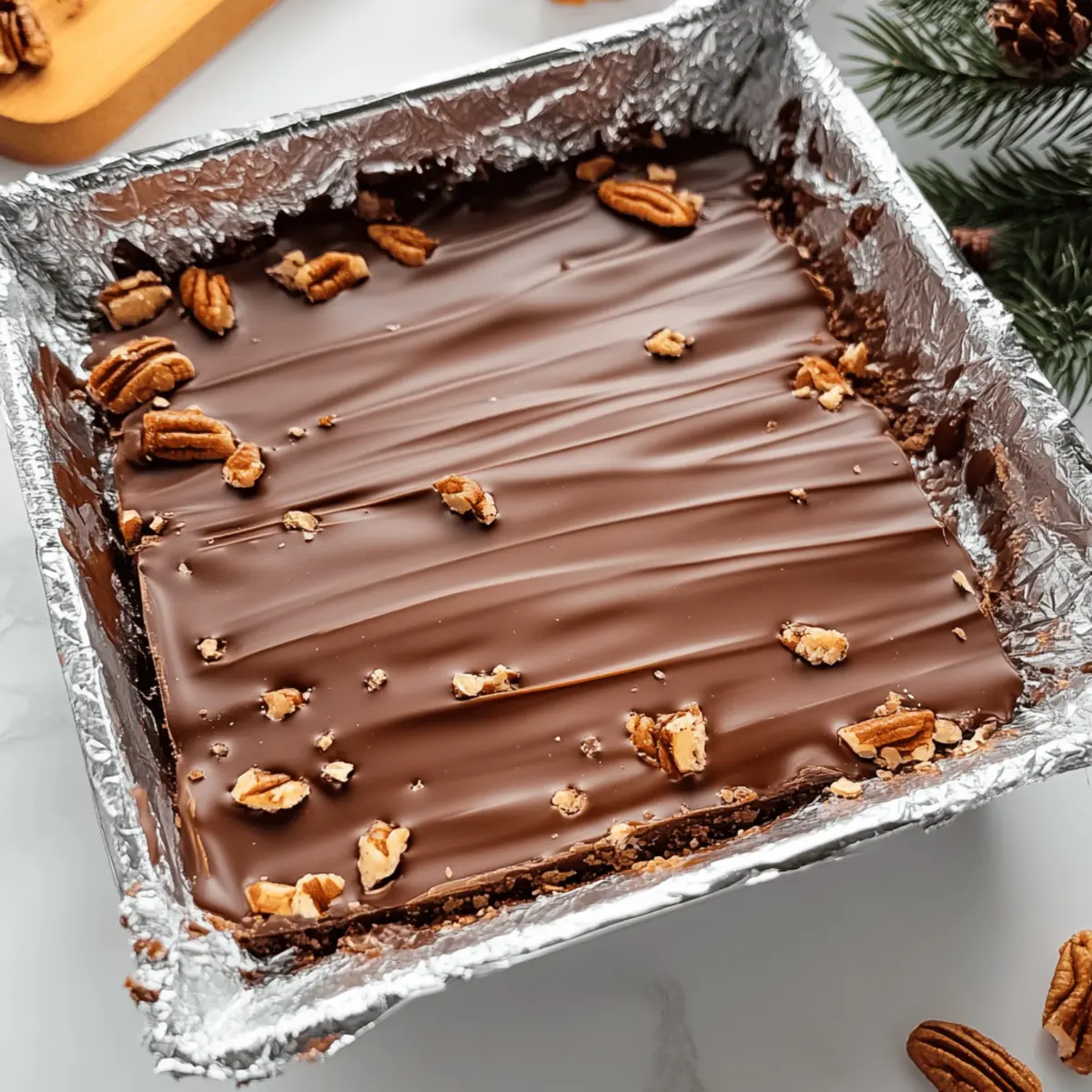
Why is Classic Christmas Toffee a Must-Try?
Irresistible Crunch: This Classic Christmas Toffee provides a delightful crunch that complements its rich, buttery flavor. Customization Options: With nut-free and dairy-free alternatives, everyone can indulge without worry. Quick Preparation: Ready in under an hour, this treat is perfect for those busy holiday schedules. Also, if you’re looking for something unique, check out our Puffs Vanilla Cream recipe! Great for Gifting: Packaged beautifully, these toffees make thoughtful gifts for family and friends. And if you’re a fan of sweet treats, don’t miss out on the twist with our Churros Twist recipe!
Classic Christmas Toffee Ingredients
• To create your delicious Classic Christmas Toffee, gather these essential ingredients to ensure a festive treat everyone can enjoy.
For the Toffee Base
- Chopped Pecans or Almonds – Adds a crunchy texture; opt for walnuts or pumpkin seeds for a nut-free version.
- Butter – Provides rich creaminess; use coconut oil for a dairy-free alternative.
- Granulated Sugar – Sweetens the toffee; consider coconut sugar for a less refined option.
- Water – Helps dissolve the sugar, making for a smoother toffee.
- Salt – Balances sweetness and enhances flavors.
- Vanilla Extract – Infuses a warm aroma that elevates the toffee’s taste.
For the Topping
- Chocolate Chips – Adds sweetness and a lovely contrast in texture for your classic toffee.
- Flaked Sea Salt (optional) – A final touch of gourmet flavor that enhances the overall sweetness.
Now you’re ready to whip up your Classic Christmas Toffee and share a piece of holiday joy!
Step‑by‑Step Instructions for Classic Christmas Toffee
Step 1: Prepare Your Baking Dish
Start by gathering all your ingredients for the Classic Christmas Toffee. Line a 9×9 inch baking dish with parchment paper, ensuring that the paper extends over the edges for easy removal later. This step is crucial to prevent sticking and make for a smoother toffee-making process.
Step 2: Layer the Nuts
Evenly spread the chopped pecans or almonds across the bottom of the prepared baking dish. Press them gently into the dish to create a solid nut base for the toffee. This will add that delightful crunch and nutty flavor every time you bite into your finished toffee.
Step 3: Combine Ingredients in a Pot
In a heavy-bottomed pot, combine the butter, granulated sugar, water, and salt. Place your pot over medium heat, stirring regularly until the mixture melts and starts to bubble. This should take about 5-7 minutes. Ensure you keep stirring to prevent the sugar from burning, aiming for a smooth, creamy consistency.
Step 4: Heat to the Hard Crack Stage
Attach a candy thermometer to the pot, ensuring it doesn’t touch the bottom. Continue to cook the toffee mixture, maintaining the medium heat until it reaches 300°F, the hard crack stage. This process usually takes around 10-15 minutes. Watch for a rich amber color as it cooks, signaling that your classic toffee is almost ready.
Step 5: Add Vanilla Extract
Once the mixture reaches the correct temperature, carefully remove the pot from heat. Stir in the vanilla extract, mixing thoroughly. The toffee will bubble up slightly at this point, releasing a wonderful aroma. Quickly pour the caramel mixture evenly over the prepared layer of nuts in the baking dish.
Step 6: Melt the Chocolate Chips
Allow the toffee to sit for about 2 minutes after pouring, giving it time to settle. Next, sprinkle chocolate chips over the hot caramel layer, covering the entire surface. Cover the dish with a lid or foil to help the chocolate melt effectively, creating a smooth topping.
Step 7: Swirl in the Chocolate
After a few minutes, uncover the toffee and use a spatula to gently swirl the melted chocolate to ensure even distribution. As you do this, consider topping it with additional chopped nuts and a sprinkle of flaked sea salt for an added gourmet touch that enhances the flavor of your Classic Christmas Toffee.
Step 8: Cool the Toffee
Let the toffee cool at room temperature for about 4 hours or until completely set. This step is essential for achieving the perfect crunchy texture. Once cooled, gently lift the parchment paper from the dish to remove the toffee, then place it on a cutting board.
Step 9: Cut into Pieces
Using a sharp knife, cut your Classic Christmas Toffee into squares or rectangles, depending on your preferred serving size. This will make it easy to share with family and friends during the holiday season. Store any leftovers in an airtight container at room temperature for up to two weeks.
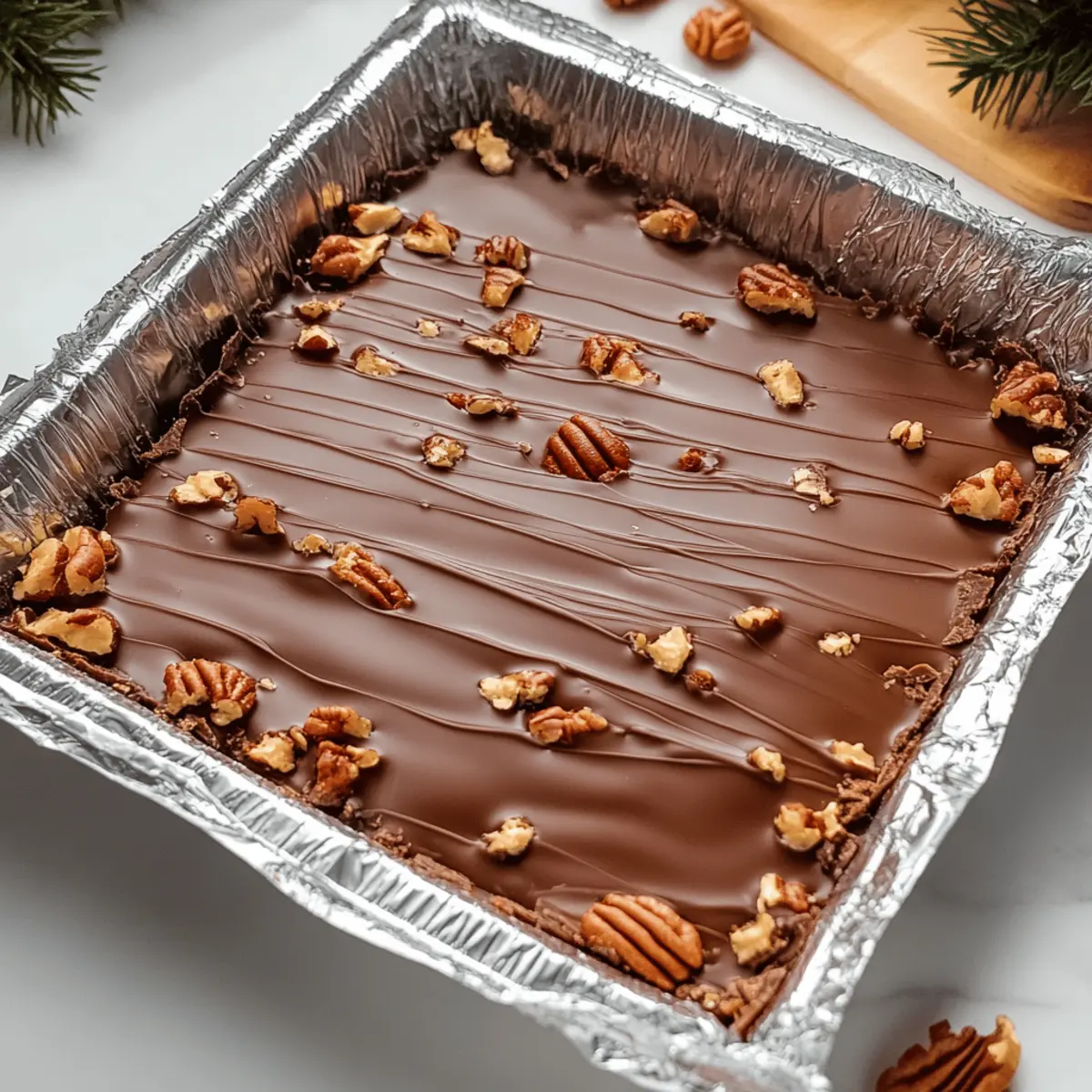
Expert Tips for Classic Christmas Toffee
-
Candy Thermometer Check: Monitor the candy thermometer closely to ensure you reach the hard crack stage at 300°F without burning the sugar.
-
Perfect Cooling: Allow the toffee to cool completely for about 4 hours to achieve that delightful crunchy texture you crave.
-
Heavy-Bottomed Pot: Use a heavy-bottomed pot for even heat distribution, which helps prevent hot spots that can burn your toffee mixture.
-
Nut Substitution: If using alternatives to pecans or almonds, consider sunflower or pumpkin seeds for nut-free options without sacrificing flavor.
-
Chocolate Melting Technique: Cover the toffee after adding chocolate chips to help them melt evenly—this creates a beautifully smooth topping.
-
Gift Packaging: For thoughtful gifting, package your Classic Christmas Toffee in decorative boxes or jars, and add a personal note for that extra special touch.
Storage Tips for Classic Christmas Toffee
Room Temperature: Store your Classic Christmas Toffee in an airtight container at room temperature for up to 2 weeks to maintain its crunchy texture and flavor.
Fridge: If you prefer a firmer texture, you can refrigerate your toffee for prolonged freshness; however, be sure it’s in an airtight container to prevent moisture.
Freezer: For longer storage, freeze the toffee in a freezer-safe container or bag for up to 3 months. Thaw at room temperature before enjoying.
Reheating: While toffee is best enjoyed as is, if it’s softened in the fridge, you can briefly warm it in the oven at a low temperature for a few minutes to restore its crunch.
What to Serve with Classic Christmas Toffee?
A delightful holiday treat like this toffee deserves equally festive companions to round out your seasonal celebrations.
-
Rich Hot Cocoa: A warm cup of hot cocoa pairs perfectly with the crunchy sweetness, enhancing the cozy holiday spirit.
-
Spiced Mulled Wine: The aromatic spices of mulled wine complement the butteriness of the toffee, offering a comforting beverage option for gatherings.
-
Charming Fruit Platter: Fresh fruits like oranges, pears, or berries bring a refreshing contrast to the sweet, rich toffee, cleansing the palate between bites.
-
Creamy Vanilla Ice Cream: A scoop of vanilla ice cream provides a creamy counterbalance to the crunch of the toffee, transforming dessert into a delightful sundae.
-
Peppermint Bark: Layered chocolate peppermint bark adds a crunchy, minty contrast that aligns beautifully with the festive vibes of your classic toffee.
-
Cheese Board: A selection of cheeses, like sharp cheddar or creamy brie, creates a delightful savory-sweet harmony alongside the toffee.
-
Gingerbread Cookies: Spicy gingerbread cookies echo the holiday theme and provide a tender, spiced bite next to the crunchy toffee.
-
Nutty Coffee: A cup of coffee enhanced with hazelnut or almond flavor brings out the nutty notes of the toffee, making for a delightful afternoon treat.
-
Dark Chocolate Dipped Strawberries: The tartness of strawberries and richness of dark chocolate create a luxurious pairing that elevates your dessert experience.
Make Ahead Options
These Classic Christmas Toffee treats are perfect for busy holiday schedules! You can prepare the toffee base up to 24 hours in advance by making the caramel mixture (steps 3 through 5) and allowing it to cool in the baking dish. Once cooled, wrap the dish tightly with plastic wrap and refrigerate. For the best quality, do not top with chocolate until just before serving, as this will ensure a smooth melt. When ready to enjoy, simply remove the toffee from the fridge, finish by melting the chocolate and swirling it on top (steps 6 through 9), and your delightful toffee will be just as delicious as if freshly made!
Classic Christmas Toffee Variations
Feel free to let your creativity shine when making this festive treat, as there are endless ways to customize your Classic Christmas Toffee!
-
Nut-Free: Substitute pecans or almonds with sunflower or pumpkin seeds for a delightful crunch without the nuts.
-
Dairy-Free: Replace butter with coconut oil to create a rich, creamy toffee suitable for dairy-sensitive guests. It adds a hint of tropical flavor!
-
Less Refined Sweeteners: Use coconut sugar or maple sugar as alternatives to granulated sugar for a unique sweetness, while adding an earthy undertone.
-
Extra Flavor: Stir in a pinch of cinnamon or a drop of almond extract for a warm twist that will transport you right into the holiday spirit!
-
Texture Variety: Instead of chocolate chips, try a layer of crushed freeze-dried fruit or peppermint candies for a colorful and festive topping.
-
Sea Salt Boost: Top the melted chocolate with a sprinkle of flaky sea salt for a gourmet touch that perfectly balances the sweetness.
-
Spicy Kick: For those who love a bit of heat, add a sprinkle of cayenne pepper or chili powder to the toffee mixture for an unexpected zing.
-
Layered Delight: Consider creating layered toffee by alternating the nut layer with a chocolate layer, using our delicious recipe for Churros Twist for added flair!
Let these variations inspire you to craft your perfect rendition of Classic Christmas Toffee, guaranteed to become a holiday favorite in your home!
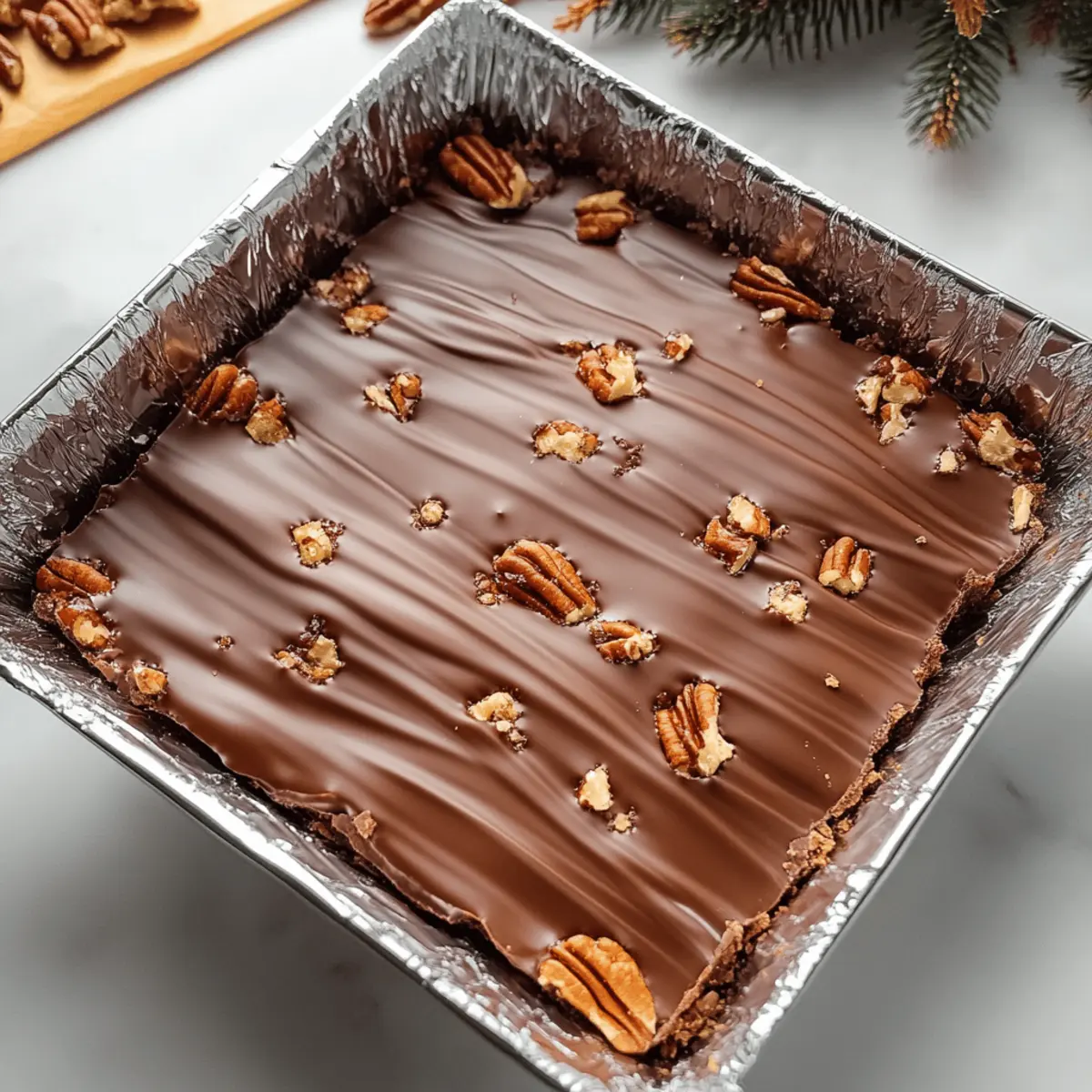
Classic Christmas Toffee Recipe FAQs
How do I choose the right nuts for my Classic Christmas Toffee?
Absolutely! For the best flavor and crunch, opt for freshly chopped pecans or almonds. Look for nuts that are firm and free from dark spots. If you’re aiming for a nut-free version, sunflower seeds or pumpkin seeds work wonderfully and still provide that delightful texture.
What’s the best way to store Classic Christmas Toffee?
To maintain the delicious crunch and flavor of your Classic Christmas Toffee, store it in an airtight container at room temperature for up to 2 weeks. If you prefer a firmer texture, you can keep it in the refrigerator, but make sure it’s sealed tightly to prevent moisture from affecting its consistency.
Can I freeze Classic Christmas Toffee, and how should I do it?
Yes! You can freeze your Classic Christmas Toffee for up to 3 months. To do this, cut the toffee into pieces and layer them between parchment paper in a freezer-safe container or bag. When you’re ready to enjoy, simply thaw it at room temperature or enjoy it straight from the freezer for an icy treat!
What should I do if my toffee won’t harden properly?
If your Classic Christmas Toffee doesn’t harden, it’s likely that it hasn’t reached the hard crack stage of 300°F when cooking. Don’t fret! Just return it to a pot and gently reheat, making sure to monitor the temperature closely this time with your candy thermometer. Stir continuously until it reaches the right temperature, then pour it again over the nuts.
Are there any dietary considerations for my Classic Christmas Toffee?
Very! If you’re making the Classic Christmas Toffee for someone with allergies, be mindful of nut substitutes and sweeteners. Use coconut oil instead of butter for a dairy-free option, and consider using coconut sugar or maple sugar if you’re avoiding refined sweeteners. Always label your homemade goodies to ensure safety for those with allergies.
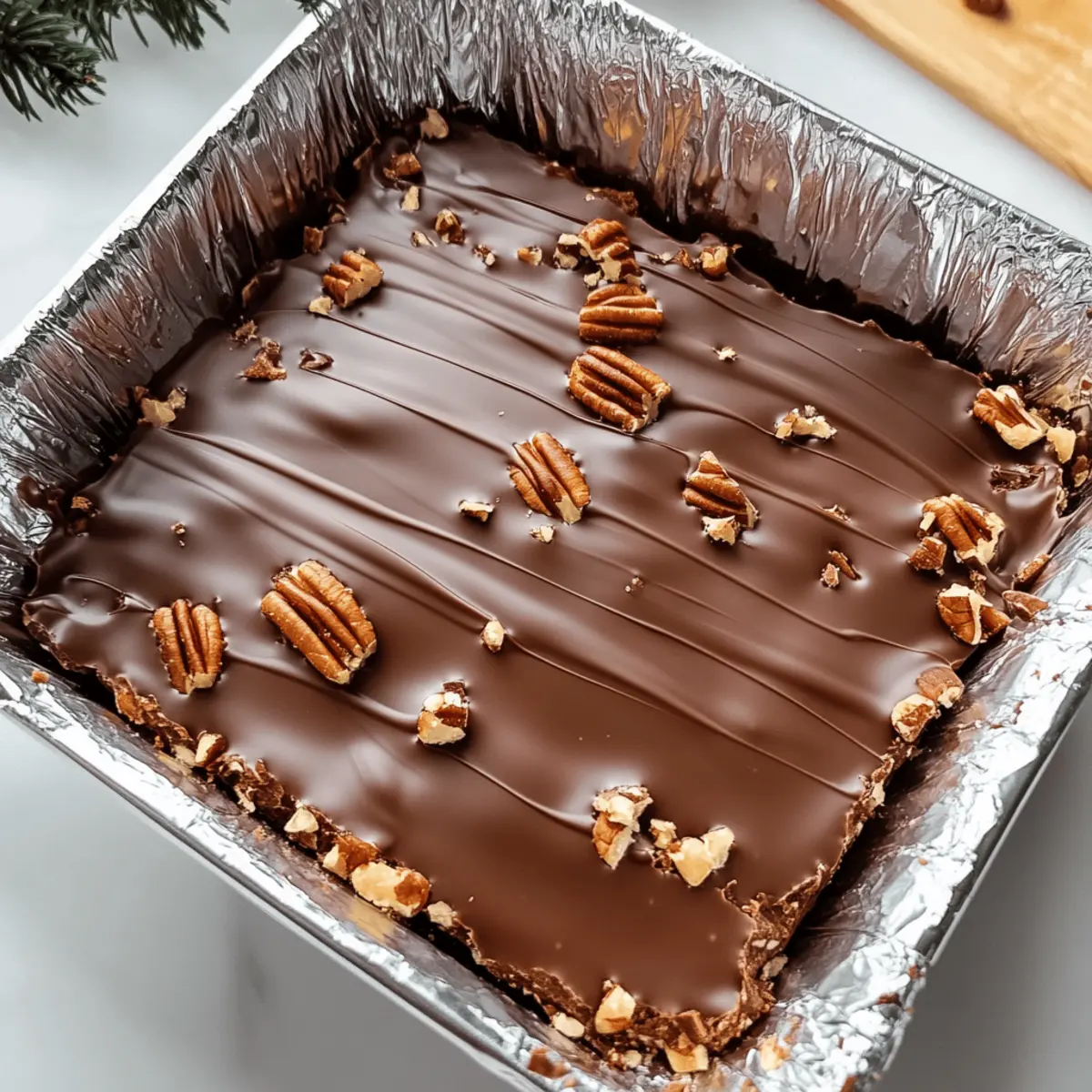
Classic Christmas Toffee: A Festive Crunch You’ll Love!
Ingredients
Equipment
Method
- Line a 9x9 inch baking dish with parchment paper, extending it over the edges.
- Spread the chopped nuts evenly across the bottom of the dish and press gently.
- Combine butter, sugar, water, and salt in a pot over medium heat, stirring until melted and bubbling.
- Cook until the mixture reaches 300°F, the hard crack stage, about 10-15 minutes.
- Remove from heat and stir in vanilla extract before pouring over the nuts.
- Allow to sit for 2 minutes, then sprinkle chocolate chips over the hot toffee.
- After a few minutes, swirl the melted chocolate for even distribution.
- Cool at room temperature for about 4 hours until set, then lift out and cut into pieces.



